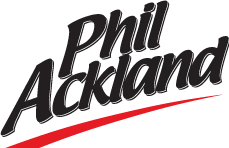Series Introduction
This is the introductory article to a series on better understanding fires in commercial kitchen systems. Over the next few months we will be adding to this series with various topics that a fire investigator needs to know when investigating commercial kitchen fires.
Fires involving commercial cooking equipment are a significant part of the U.S. fire problem. According to NFPA statistics an annual average of 11,100 fires take place in eating and drinking establishments. The origin of one-half of these fires was in the kitchen – the location of heat producing appliances.
Applying the principles of fire investigation in commercial kitchens requires an understanding of:
- the operation of the commercial kitchen
- how the cooking appliances relate to each other
- the production of combustible grease accumulations
- how those accumulations affect the spread of a fire
- the expectations of the fire resistant construction installation
- the maintenance of the exhaust system and the operation of the fire suppression system
Stages of a kitchen grease fire
Food preparation requires heat, in most cases supplied by natural gas. Cooking food results in the production of grease vapors, which are drawn up into the exhaust system by a fan. These combustible grease residues rapidly recondense within the exhaust system, accumulating a fuel load over time and retarding the ability of the exhaust and suppression system from operating as designed. Cooking appliance malfunction, excess oils or human error will cause ignition of oils and create sustained flare-ups (uncontrolled burn). The impinging heat (flames) from the initial uncontrolled burn can have sufficient energy to ignite the grease residue on filters and in the hood, creating spread.
Once ignition within the hood area takes place, several factors will determine whether combustion continues and the intensity of the uncontrolled burn, including:
- continuing heat from the initial uncontrolled burn on the appliance
- the proximity of the appliance to the hood area
- failure of the fire suppression system to operate as designed
- grease accumulation within the exhaust system
- actions (or lack of action) by the kitchen staff
Under normal conditions, air movement provided by the fan supplies all the oxygen necessary to sustain burn. This air movement now encourages the fire up into the ductwork. Radiant heat from a fire within the duct often ignites structural materials, spreading the fire out of the exhaust system and into the building. If the fire reaches the fan, heat from the melting of aluminum fan will drip onto combustible roofing materials, igniting these surfaces.
This is the ‘typical’ spread of a serious, building-damaging kitchen fire. There are, of course a number of other variables.
Nearly all of these possibilities are supposed to be prevented by proper construction, installation and maintenance to fire and building codes standards. But, simply put, many commercial kitchen exhaust systems are not installed or maintained according to the Fire Code.
By Phil Ackland

